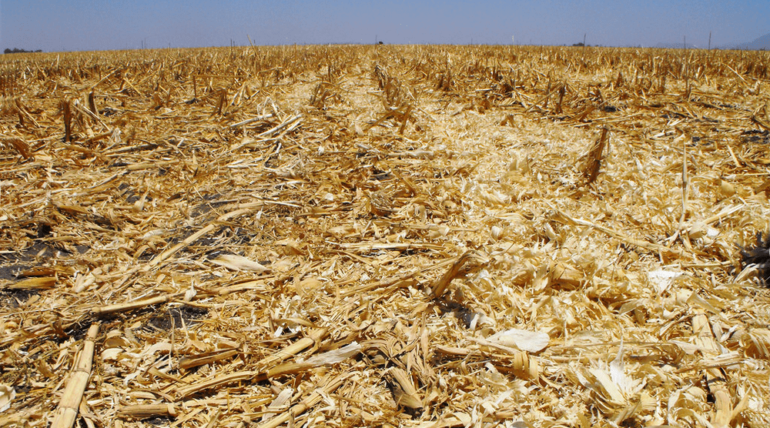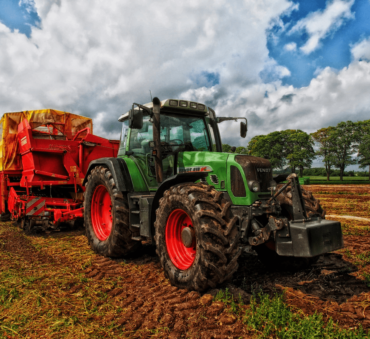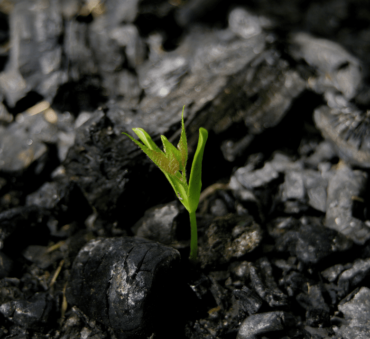When we consider the vast landscape of our global economic system, it’s impossible to ignore the central role of agriculture. Serving as the very backbone of numerous industries, economies, and, most importantly, the sustenance of human life itself, the importance of farming and agriculture is paramount.
With an impressive growth rate of 2.8% annually, the agricultural industry currently contributes a staggering $1.264 trillion to the U.S. GDP. A critical part of this titan industry is crop production, a sub-field that isn’t just about the food and fibers it yields but the domino effect it sets into motion, stimulating myriad other sectors like food processing, packaging, trade, and transportation.
However, amidst the undeniable benefits crop production affords us, it also introduces a set of challenges. And one such overlooked and underestimated challenge is the effective management of crop residue.
Crop residue definition
To discuss crop residue management effectively, it’s important to first understand what crop residue is. Crop residue refers to the remains of crops either left in the field after the primary harvest or produced during the processing of crops.
Types of crop residues
Crop residues generally fall into two main categories: field residues and process residues.
Field residues
Field residues are what remain directly on the field after the primary crop harvest. They typically include stalks, leaves, cobs, husks, shells, and stems, which can significantly vary in quantity and composition depending on the type of crop. For instance, high-residue crops like corn and wheat leave behind a larger amount of field residues compared to lower-residue crops like soybeans.
A list of crop residues that fall under this category include:
- Corn Stalks
- Wheat Straw
- Rice Straw
- Cotton Stalks
- Soybean Residue
Process residues
Process residues, on the other hand, refer to the by-products produced during the post-harvest processing of crops. These residues are usually generated during processes such as threshing, milling, and husking, where the primary aim is to separate the usable parts of the crop from the unusable parts. These often include:
- Rice Husk
- Corn Cobs
- Wheat Bran
- Peanut Shells
- Cotton Seeds
Characteristics of crop residue
The characteristics are multifaceted and depend on factors such as the type of crop, soil quality, and farming methods used. However, three critical elements define crop residues: their composition, nutrient content, and physical and chemical properties.
Composition
Their composition is rich and diverse, contributing to their utility in agricultural and industrial applications. They are predominantly composed of organic materials, mainly plant-based compounds such as cellulose, hemicellulose, and lignin. Cellulose and hemicellulose are polysaccharides that serve as an abundant source of carbon and energy, while lignin is a complex organic polymer that provides structural rigidity to the plant cell walls.
Nutrient content
Crop residue nutrient content is another fundamental characteristic that underscores their role in sustainable agriculture. They often contain significant amounts of essential nutrients like nitrogen, phosphorus, and potassium. This varies depending on the type of crop residue and the crop’s growth stage at the time of harvest.
Physical properties
The physical properties include factors such as size, shape, density, and moisture content. These properties can significantly influence the way residues are managed and utilized. For instance, large and bulky residues may require additional processing (like shredding or grinding) to reduce their size for easier handling or to increase their surface area for faster decomposition or more efficient conversion to bioenergy.
Chemical properties
These properties mainly refer to the residues’ chemical composition and include elements such as carbon, hydrogen, nitrogen, sulfur, and oxygen, along with trace amounts of other elements. The chemical properties play a key role in determining the suitability of residues for various uses.
Additionally, the presence of certain elements or compounds (like silica in rice straw or sulfur in some oilseed residues) can affect the combustion properties when used for bioenergy, necessitating specific handling or pre-treatment processes.
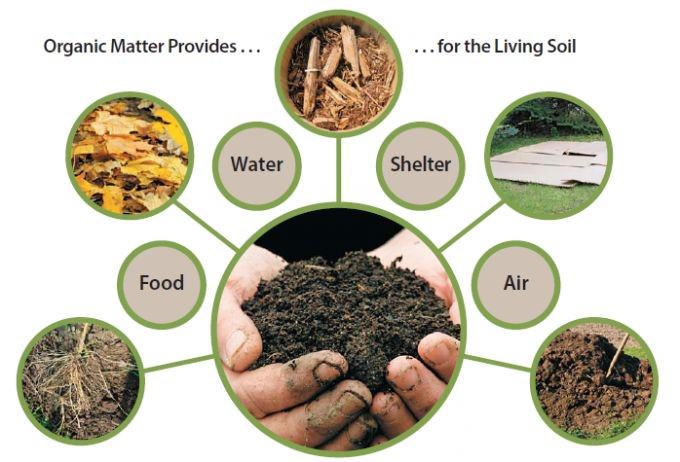
Crop residue uses
Despite often being overlooked, crop residues have multiple uses:
Fertilizers
Abundant in nutrients such as nitrogen, phosphorus, and potassium, residues can be decomposed and reintegrated back into the soil. This integration serves as a natural nutrient supplement, bolstering the soil’s fertility and, subsequently, crop yield. Additionally, this process contributes to soil structure improvement, fostering healthier root development and enhancing water retention.
Animal Feed
Certain crop residues, like corn stalks and wheat straw, are substantial sources of animal feed, particularly in resource-constrained settings. Their usage as animal feed not only offers a cost-effective solution for livestock management but also reduces the burden on other feed sources.
Bioenergy
They have also emerged as vital contributors to bioenergy production. The conversion of residues into biochar through pyrolysis provides an alternative energy source, diversifying the energy mix and decreasing dependency on fossil fuels. This process also captures and stores a significant amount of carbon, aiding in climate change mitigation through carbon sequestration.
Crop residue management techniques
Crop residue burning
Crop residue burning is a conventional management technique that is primarily utilized due to its cost-effectiveness and efficiency in clearing large amounts of residue swiftly. While this method is still common, it has significant environmental ramifications, including air pollution and carbon emissions. Therefore, this technique should only be considered as a last resort.
Mulching
Mulching, a natural process, involves leaving crop residues on the field to decompose gradually. By enhancing the soil’s organic matter content, mulching improves its structure and fertility and helps maintain its moisture levels. It also serves as a natural weed suppressant, thus aiding in effective weed management. However, it’s important to note that the speed of decomposition can be affected by climatic conditions and the nature of the residue itself.
Biochar production
Biochar production represents an innovative and environmentally friendly technique that involves process pyrolysis, a high-temperature treatment in the absence of oxygen, which converts the residues into biochar. This biochar can serve dual purposes: when incorporated into soil, it improves soil health, and when used as fuel, it provides a renewable source of energy. Additionally, it sequesters carbon, thereby contributing to climate change mitigation.
Composting
Composting crop residues is another effective technique that uses controlled decomposition. This bio-oxidative process, facilitated by microbial action, converts the organic matter into a nutrient-rich compost, which can be utilized as a soil amendment. By enhancing soil fertility, composting can contribute significantly to sustainable agriculture.
Anaerobic digestion
The anaerobic digestion process is a biological method that breaks down organic waste in the absence of oxygen, producing biogas. This biogas can serve as a renewable source of energy, providing a sustainable alternative to fossil fuels.
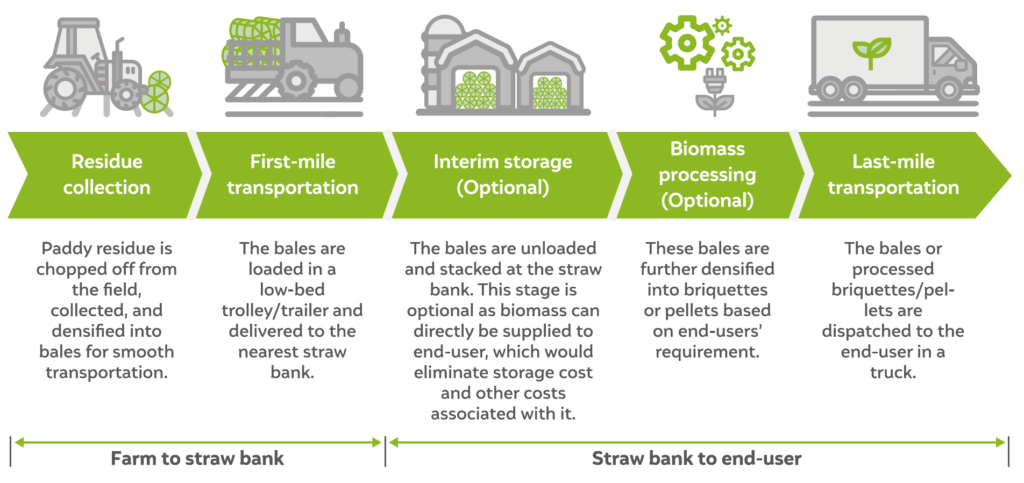
Crop residue management machinery
Advancements in technology have introduced us to a myriad of equipment options designed to make the job easier, more efficient, and increasingly sustainable.
Different types of machinery have various applications in crop residue management. For instance, residue choppers and shredders can efficiently break down leftover stalks, stems, and leaves into smaller pieces, promoting faster decomposition. Likewise, balers are essential for collecting and compacting residues into manageable bundles, making transport and further processing simpler.
At Shapiro, we recognize the critical role of technology and machinery in crop residue management. We work in close alliance with a nationwide network of certified waste processing facilities that specialize in using only top-of-the-line equipment to process various types of agricultural waste.
Benefits of crop residue management
Effective crop residue management can deliver several benefits, both environmentally and economically.
Beneficial effect of crop residue on soil health and crop yield
Crop residues can significantly enhance soil health by improving its physical properties, enriching its nutrient content, and promoting beneficial microbial activity. This ultimately leads to improved crop yields, thus boosting productivity.
Beneficial effects of crop residue on social and environmental concerns
When managed effectively, residues can help address various social and environmental concerns. For instance, using them as a source of bioenergy can provide a sustainable energy solution for communities, reducing reliance on fossil fuels and helping reduce greenhouse gas emissions.
Crop residue management cons
While effective management brings considerable benefits, it’s also essential to highlight potential pitfalls when not conducted correctly.
- Soil degradation: Burning residues also results in the loss of valuable organic matter and nutrients from the soil, degrading its health over time.
- Impact on air quality: Burning crop residues releases vast amounts of pollutants, including particulate matter, carbon monoxide, and various volatile organic compounds. These pollutants contribute to poor air quality, often leading to smog, haze and other environmental problems.
- Health risks: Exposure to the smoke from residue burning poses serious health risks. It can cause respiratory problems, aggravate existing lung and heart diseases, and even lead to premature death.
- Greenhouse gas emissions: Mismanaged crop residues, particularly those that decompose anaerobically, can release methane, a potent greenhouse gas. This release contributes to global warming and undermines the climate mitigation potential of waste management.
How to manage crop residue the right way?
Managing crop residues effectively requires the careful balancing of various factors, from selecting an appropriate management technique to employing the right machinery and adhering to environmental regulations. This is why we highly recommend partnering with certified professionals to ensure your agricultural waste recycling solution is managed by the book.
Our commitment to upholding the highest standards of sustainability and efficiency in organic waste management practices allows us to guide you on this journey. If you’re seeking expert agricultural waste services and biochar solutions, reach out to us today. We’re ready to assist you responsibly and efficiently.
Frequently Asked Questions
Crop residues are the plant parts remaining after the primary crop product has been harvested. These could include stalks, leaves, husks, and cobs. Agro-industrial by-products, on the other hand, are the waste products generated during the processing of agricultural commodities in industries. Examples include rice husks from rice mills and bagasse from sugar industries.
Yes, crop residues can be used as a source of fuel. They can be directly combusted for heat or electricity generation or converted into biofuels such as bioethanol and biogas through various biochemical and thermochemical processes.
Not directly. Crop residues are primarily composed of lignocellulosic materials, which are not suitable for biodiesel production. However, they can be converted into bioethanol, a different type of biofuel, through processes such as fermentation.
Crop residue management can significantly benefit agriculture. Properly managed, they can enhance soil health, improve water retention, prevent erosion, and supplement soil nutrients, all contributing to increased crop yields.
Crop residues, when left on the field, form a protective layer on the soil surface. This layer reduces evaporation, increases soil water-holding capacity, and slows water runoff, thus enhancing water conservation and efficiency in agricultural fields.
Baily Ramsey, an accomplished marketing specialist, brings a unique blend of anthropological insight and marketing finesse to the digital landscape. Specializing in educational content creation, she creates content for various industries, with a particular interest in environmental initiatives.
